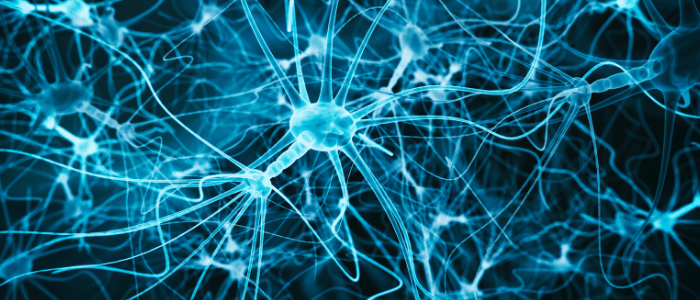Using real-world data to see the big picture in SMA

Important information
The following feature is intended for healthcare professionals only. Please tick the box below to confirm that you are a healthcare professional.
Dr Angela Paradis, Global Medical Head of Data Generation for Neuromuscular Disease at Biogen, shares her perspective on how real-world data is crucial for piecing together the puzzle of spinal muscular atrophy (SMA).
SMA is a genetic, progressive, neuromuscular disease that affects an individual’s ability to perform the basic functions of life, such as walking, eating, and, ultimately, breathing. The development of a long-awaited treatment for SMA began with the community systematically piecing together information from basic science, pre-clinical research and then clinical trials, resulting in the first treatment being approved by the European Medicines Agency in 2017. Two further treatments have since been approved and as use of these treatments has widened, some of the most important information on these therapies is coming, and will continue to come, from real-world evidence (RWE). The collection of high quality, robust data from individuals with SMA in the real-world setting is helping us better understand the natural history of the disease, patterns of treatment use, and the effectiveness and safety of disease modifying therapies.
Going beyond clinical trials
SMA clinical trials have primarily included infants and children because of the increased severity of the disease when symptoms begin early in life. While clinical trials typically focus on homogenous, highly selected patient populations, real-world studies allow us to assess the effectiveness and safety of a treatment in larger heterogenous populations and enhance understanding of long-term outcomes. In the case of SMA, clinical trials highlighted the importance of early treatment, particularly during the pre-symptomatic stage of the disease, for optimizing outcomes for individuals with SMA. With the expansion of newborn screening for SMA, many infants are now being diagnosed and treated pre-symptomatically so it will be important to understand from real-world data how treatments may be reshaping disease trajectories for these patients. We now have over 5 years of post-approval data from children who first received treatment as infants after SMA symptoms had already onset. These are children who, if untreated, would not typically survive early childhood, so there is still much to learn about the evolution of the disease and the long-term outlook for these patients.
Over half of the individuals living with SMA are adults. Most of what we know about SMA treatment in adults comes from real-world experience, and these insights support the value of treatment, and have helped secure treatment access for the adult population in countries where access was previously restricted. For example, data from observational cohort studies in Italy, Germany and Spain, which demonstrated the benefits of treatment in adult SMA patients, played a role in expanding access and reimbursement for SMA patients in the UK who had lost the ability to walk [1–4].
It is also important to remember that real-world data are not just valuable in understanding the effect of treatment. They are also essential to furthering understanding of the natural history of the disease in the absence of treatment. Not only does this advance our scientific knowledge, but it also helps contextualize and interpret the outcomes seen amongst treated individuals [5,6]. This is especially important in rare diseases such as SMA, where clinical trials often do not have a control arm.
Therefore, for individuals with SMA across the disease spectrum, from infants to adults, we are learning more about how they are responding to treatments in the real world, enabling healthcare professionals to improve care for patients and manage expectations for treatment [1–4].
A collaborative, community forward approach to generating RWE
Biogen supports the generation of real-world data to address key evidence gaps through a number of routes; we fund studies that are conducted independently by investigators, in other instances we collaborate directly with investigators on the design and conduct of their studies, we initiate studies ourselves, and we support multiple SMA disease registries that are led by academic clinicians.
Registries are organized systems through which observational data are collected in a systematic and standardized way, often through clinical encounters with patients during routine clinical practice. We are now fortunate to be working with 18 SMA disease registries across 19 countries, which have enrolled over 4500 individuals living with SMA across the globe [7]. We welcome the fact that these registries are owned by academic clinicians (rather than by Biogen) and appreciate them as valuable data sources that can benefit the whole SMA community, including individuals with SMA and their families, health care providers, researchers, regulators, payors and industry. In the multi-treatment landscape that we are currently in, it is important that these registries include data on all available therapies (and any future therapies), enabling clinicians to better understand which treatment is best for which patient at which time. It is equally important for these efforts to be flexible in accommodating the evolving needs of the various stakeholders, thereby avoiding fragmented or siloed approaches for collecting real-world data.
We are supporting efforts to align and standardize to a core minimum data set across registries worldwide, to ensure the information can be potentially pooled and analyzed together to address key scientific research questions and data needs. This harmonization is critical in ensuring that the RWE generated is large enough and robust enough to provide clear insights to inform clinical practice. We have also been working to improve the capacity and capability of registries to collect reliable, high-quality data, and provide financial support to implement data collection and ensure sustainability over time.
At last, the big picture is being revealed.
Realizing the potential of Real-World Data
So, real-world data is helping us to see the big picture – but what’s next?
Real-world data will continue to play a critical role in addressing key questions relevant for patient care, such as predictors of treatment response, and inform treatment decision making in a multi-treatment era. Real-world experience with SMA treatments has provided us with novel hypotheses that we are now testing via new clinical trials, such as regimens where patients use different treatments in sequence. It will help the community understand the most effective sequence of treatments to use, and why some people respond better to a given treatment than others.
Knowing the answers to these types of questions helps healthcare professionals optimize care outcomes for the diverse, heterogenous real-world patient population. Importantly, it will also enable healthcare providers to give patients and their families a clear and realistic picture of the treatment expectations and long-term health outcomes. Receiving an SMA diagnosis comes with a huge amount of uncertainty, and my hope is that in the future, real-world data can inform prediction models that can reliably estimate the likelihood of achieving certain outcomes, such as sitting or walking independently, and help healthcare professionals, patients and their families make informed treatment choices.
RWE will continue to be used to support access and reimbursement decisions, ultimately helping more patients to gain access to potentially life-changing treatments worldwide [4].
And this, after all, is the big picture we all want to see.
Disclaimer
The opinions expressed in this interview are those of the author and do not necessarily reflect the views of Neuro Central or Future Science Group.
Meet the author

Dr Angela Paradis is the Global Medical Head of Data Generation for Neuromuscular Disease at Biogen, where she works to advance the understanding of neuromuscular diseases such as SMA.
In association with:
